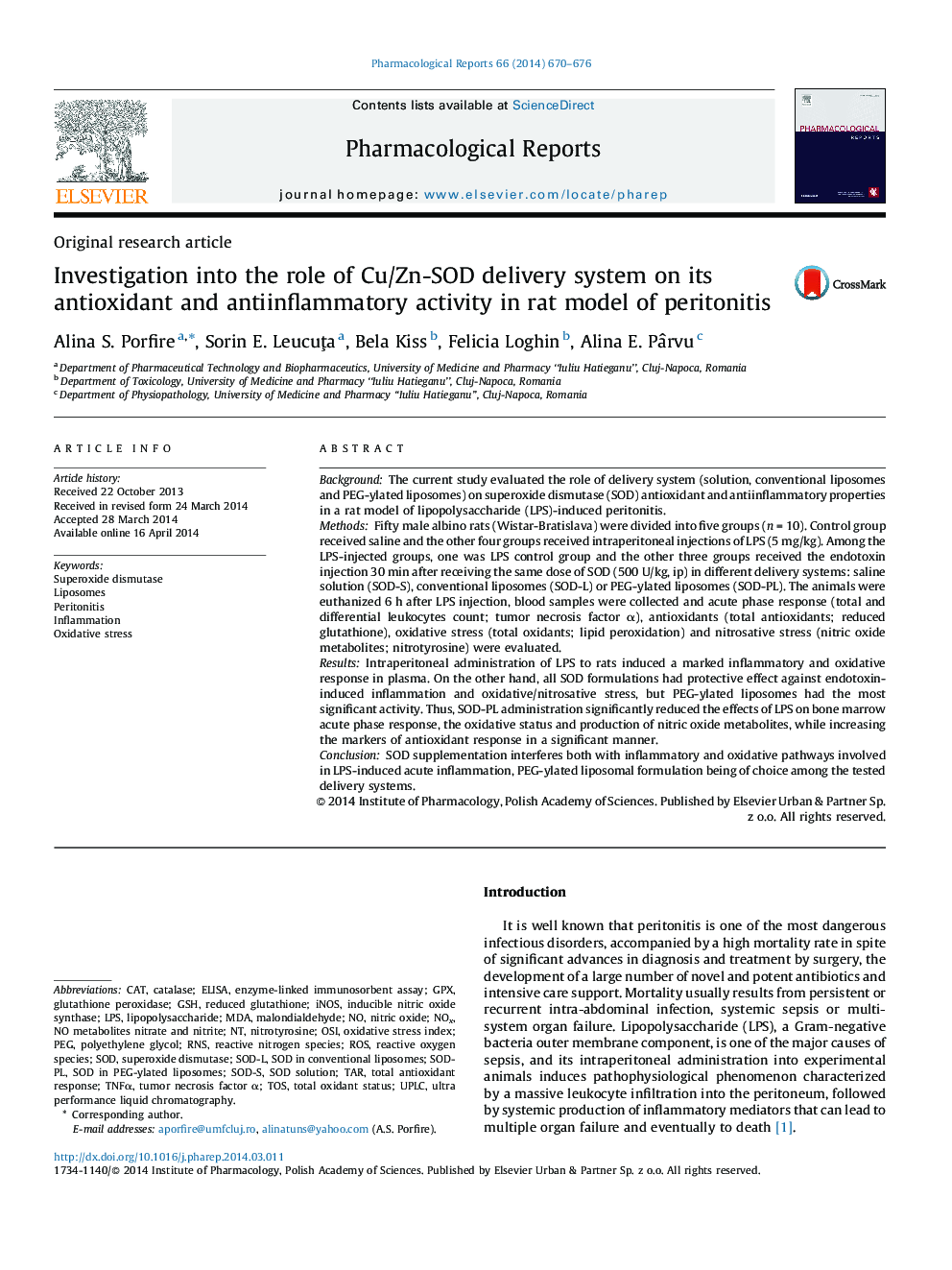| کد مقاله | کد نشریه | سال انتشار | مقاله انگلیسی | نسخه تمام متن |
|---|---|---|---|---|
| 2012102 | 1067024 | 2014 | 7 صفحه PDF | دانلود رایگان |

BackgroundThe current study evaluated the role of delivery system (solution, conventional liposomes and PEG-ylated liposomes) on superoxide dismutase (SOD) antioxidant and antiinflammatory properties in a rat model of lipopolysaccharide (LPS)-induced peritonitis.MethodsFifty male albino rats (Wistar-Bratislava) were divided into five groups (n = 10). Control group received saline and the other four groups received intraperitoneal injections of LPS (5 mg/kg). Among the LPS-injected groups, one was LPS control group and the other three groups received the endotoxin injection 30 min after receiving the same dose of SOD (500 U/kg, ip) in different delivery systems: saline solution (SOD-S), conventional liposomes (SOD-L) or PEG-ylated liposomes (SOD-PL). The animals were euthanized 6 h after LPS injection, blood samples were collected and acute phase response (total and differential leukocytes count; tumor necrosis factor α), antioxidants (total antioxidants; reduced glutathione), oxidative stress (total oxidants; lipid peroxidation) and nitrosative stress (nitric oxide metabolites; nitrotyrosine) were evaluated.ResultsIntraperitoneal administration of LPS to rats induced a marked inflammatory and oxidative response in plasma. On the other hand, all SOD formulations had protective effect against endotoxin-induced inflammation and oxidative/nitrosative stress, but PEG-ylated liposomes had the most significant activity. Thus, SOD-PL administration significantly reduced the effects of LPS on bone marrow acute phase response, the oxidative status and production of nitric oxide metabolites, while increasing the markers of antioxidant response in a significant manner.ConclusionSOD supplementation interferes both with inflammatory and oxidative pathways involved in LPS-induced acute inflammation, PEG-ylated liposomal formulation being of choice among the tested delivery systems.
Journal: Pharmacological Reports - Volume 66, Issue 4, August 2014, Pages 670–676